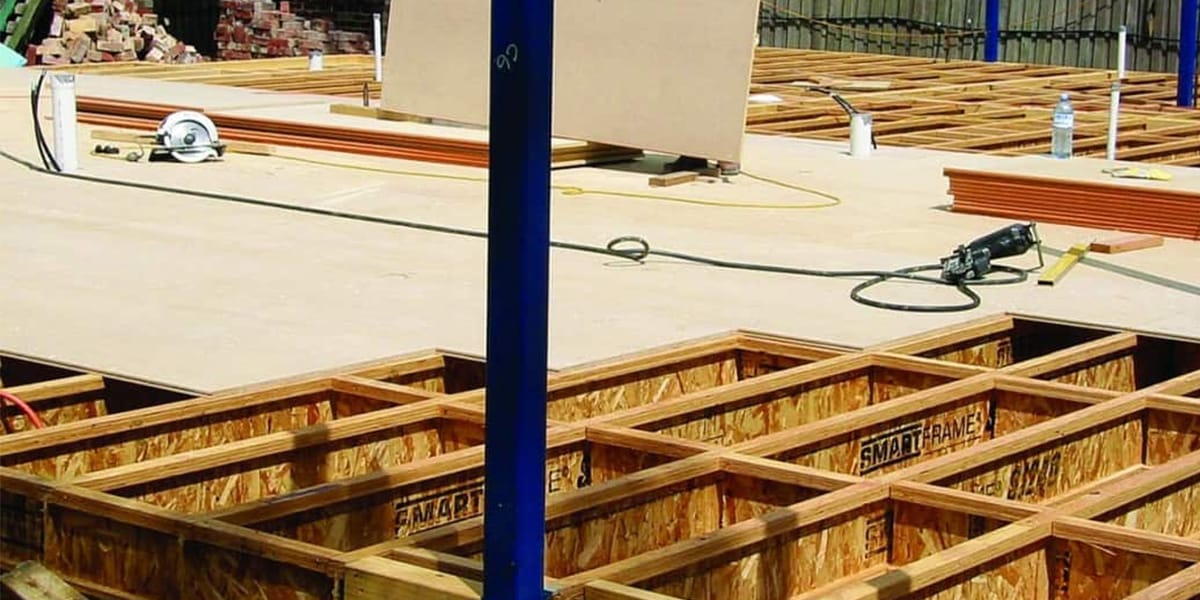
14 Aug 3 Subfloor Board Choices for Perfect floors in 2025
Table of Contents
Here are your top 3 subfloor board choices for 2025:
Subfloor Board Type | Best For | Why Choose It? |
|---|---|---|
Plywood | Hardwood, Vinyl | Strong, reliable, and easy to work with as a subfloor board |
Cement Board | Tile, Vinyl | Moisture and fire resistant, provides a stable subfloor board base |
Magnesium Oxide | Vinyl, Tile | Durable, eco-friendly, and resists mold, making it a top subfloor board option |
Choosing the right subfloor board ensures your flooring lasts longer, stays quiet, and feels solid underfoot. If you want the best subfloor board for vinyl, magnesium oxide is a great pick. For tile, cement board is the standout subfloor board. Plywood is the best subfloor board for hardwood. With these subfloor board options, your project will truly shine.
Key Takeaways
Pick plywood for hardwood floors and vinyl. It gives strong support and helps stop squeaks. Do not use it where there is water.
Cement board is good for tile floors in wet places. Use it in bathrooms and kitchens. It does not let water or fire in easily.
Magnesium oxide board works well for vinyl and tile in damp spots. It is strong, stops mold, and is good for the planet.
Make sure your subfloor is dry, flat, and clean before you start. This helps stop damage and makes your floor last longer.
Use the right underlayment with your subfloor. It makes the floor softer, quieter, and keeps out water.
Subfloor Board Comparison
Key Features
When you pick a subfloor board, you want something strong, safe, and able to handle moisture. Let’s look at how plywood, OSB, cement board, and magnesium oxide board stack up:
Material | Fire Resistance | Moisture Resistance | Environmental Impact | |
|---|---|---|---|---|
OSB | High | Moderate | Low | Low |
Plywood | Moderate to High | Moderate | Moderate | Moderate |
Cement Board | Moderate | High | High | Moderate |
Magnesium Oxide | Moderate | High | High | High |
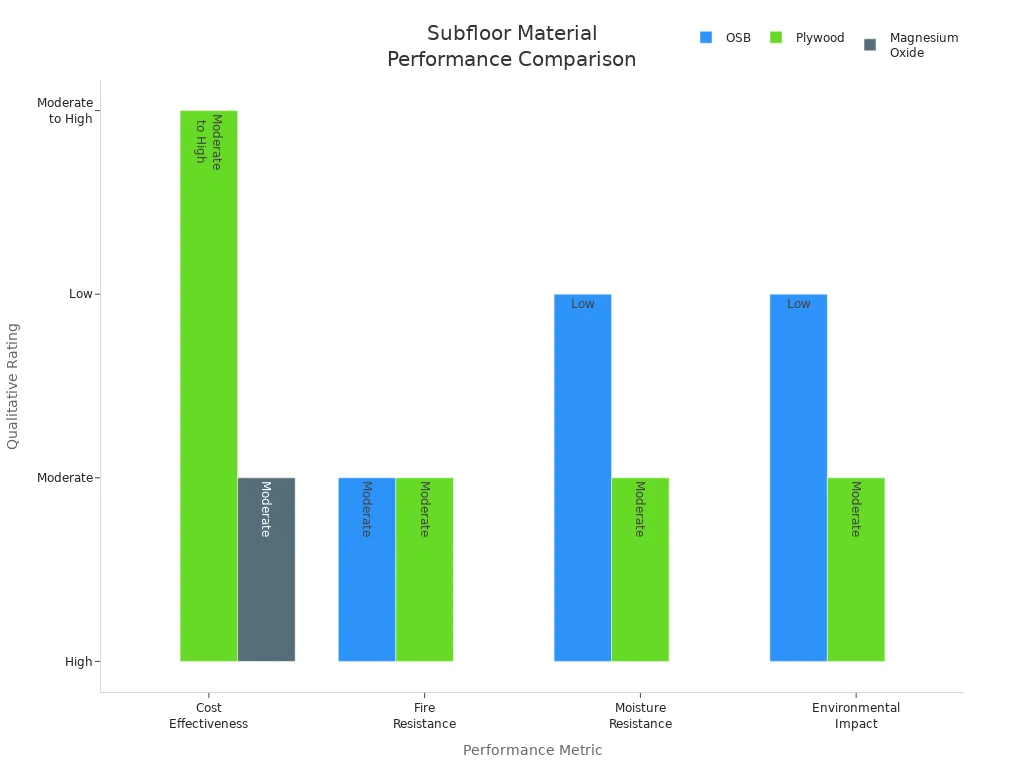
You’ll notice that magnesium oxide board stands out for fire and moisture resistance. Plywood gives you a good balance of strength and cost. OSB is the most affordable, but it doesn’t do well with water. Cement board is a solid choice for tile and wet areas.
Pros and Cons
Let’s break down the best uses, pros, and cons for each subfloor board:
Plywood
- Best for: Hardwood, vinyl, and most home projects.
- Pros: Strong, lasts a long time, easy to cut, and handles some moisture. You can use it in kitchens, living rooms, and even upstairs. It’s also a good choice if you need to fit pieces into odd spaces.
- Cons: Costs more than OSB. If it gets wet for too long, it can split or rot. It’s heavy, so you might need help to move it.
OSB
- Best for: Budget projects where moisture isn’t a big problem.
- Pros: Cheap and strong for dry areas.
- Cons: Swells and warps if it gets wet. Not good for bathrooms or basements. Some OSB can give off a smell from chemicals.
Cement Board
- Best for: Tile floors, especially in bathrooms or kitchens.
- Pros: Handles water and fire very well. Makes a sturdy base for tile.
- Cons: Heavy and hard to cut. You need special tools. It costs more and takes longer to install.
Magnesium Oxide Board
- Best for: Vinyl and tile, especially in damp or humid places.
- Pros: Super tough, resists mold, fire, and water. Eco-friendly and lasts a long time.
- Cons: Costs more at first, but you save money over time because it lasts.
Tip: Always use the right underlayment with your subfloor board. This helps your floor last longer and feel better under your feet.
Subfloor Board Reviews
Plywood Subfloor
Plywood stands out as a classic choice for many homes. You can use it for almost any type of flooring, but it shines under hardwood and vinyl. This subfloor board gives your floors a solid, sturdy feel. You will notice less squeaking and movement when you walk across the room.
Key Features:
Sturd-I-Floor panels combine subfloor and underlayment, so you save time and money.
Tongue-and-groove edges make installation faster and help your floor feel stiffer.
Plywood underlayment works well under vinyl or tile because it resists dents and punctures.
You can find different thicknesses and span ratings to match your joist spacing.
Plywood is rated as Exposure 1, so it can handle some moisture during construction.
Feature | Details |
|---|---|
Moderate (Exposure 1 rating) | |
Fire Classification | Class III or C |
Thickness Options | 19/32 inch, 23/32 inch, and more |
Edge Types | Square or tongue-and-groove |
Sound Reduction | Quieter underfoot, especially with glued floor systems |
Structural Stiffness | High, especially with tongue-and-groove panels |
Pros:
Strong and reliable for most homes.
Easy to cut and fit into tricky spaces.
Reduces squeaks and nail pops when installed with glue and screws.
Cons:
Costs more than OSB.
Can split or rot if it stays wet for too long.
Heavy to carry and install.
Best Flooring Match:
You get the best results with hardwood and vinyl. Plywood also works under carpet and tile if you use the right grade.
Installation Tips:
Use tongue-and-groove panels for a tighter fit.
Glue and screw the panels to the joists to stop squeaks.
Match the span rating to your joist spacing for a strong floor.
💡 Tip: Always check for level and dry conditions before installing plywood. This helps your flooring last longer.
Cost:
In 2025, you can expect to pay between $4.50 and $10.00 per square foot for plywood subfloor installation, including labor. Material costs alone range from $2.50 to $3.50 per square foot. Labor usually adds $25 to $30 per hour. For a 300-square-foot room, the average total is about $620.
Cement Board Subfloor
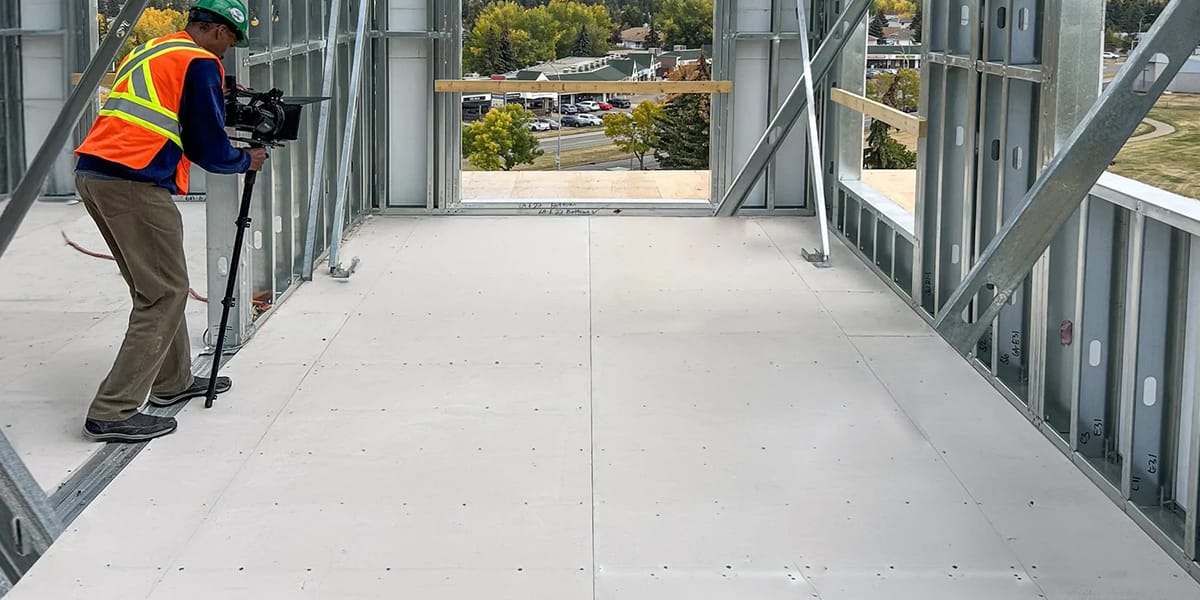 Cement board is a top pick when you want a subfloor that can handle water and heavy tiles. You will see it most often in bathrooms, kitchens, and laundry rooms. This subfloor board gives you a stable, long-lasting base for tile and stone.
Cement board is a top pick when you want a subfloor that can handle water and heavy tiles. You will see it most often in bathrooms, kitchens, and laundry rooms. This subfloor board gives you a stable, long-lasting base for tile and stone.
Key Features:
Cement board resists water, so it will not swell or buckle in wet areas.
It supports heavy or large tiles without cracking.
The smooth surface helps tile adhesives stick better.
You can use it on floors and walls.
Benefit | Why It Matters |
|---|---|
Moisture Resistance | Stops warping, mold, and tile or grout failure |
Stability | Rigid and durable, resists cracking even if the subfloor moves |
Adhesion | Tiles stick better, lowering the risk of loose tiles |
Load Capacity | Handles heavy tiles and foot traffic |
Installation Ease | Installs with screws and mesh tape, ready for tile after underlayment is done |
Wet Area Suitability | Perfect for bathrooms, kitchens, and laundry rooms |
Pros:
Makes a strong, stable base for tile.
Reduces the risk of mold and mildew.
Cons:
Heavy and hard to cut; you need special tools.
Costs more than OSB or basic plywood.
Takes longer to install.
Best Flooring Match:
Cement board is best for tile and stone. You can also use it under vinyl in wet areas.
Installation Tips:
Dry-fit cement board sheets, staggering the seams.
Cut boards with a utility knife or jigsaw.
Spread thinset mortar before laying the cement board.
Secure with cement board screws every 8 inches.
Tape seams with fiberglass mesh tape.
Once the cement underlayment is down, you are ready for tile.
🛠️ Note: Cement board lasts longer than plywood in wet areas. Always use it in bathrooms and kitchens for the best results.
Cost:
Cement board costs more than plywood, but you save money in the long run because it prevents water damage and tile failure. Expect to pay a bit extra for labor since installation takes more time.
Magnesium Oxide Board Subfloor
Magnesium oxide board is a modern subfloor option that is gaining popularity fast. You get a lightweight, eco-friendly board that stands up to almost anything. This board works well under vinyl and tile, especially in places where moisture or mold could be a problem.
Key Features:
High strength and durability, so it handles heavy loads and impact.
Fire-resistant, making your home safer.
Resists moisture, mold, and mildew, which keeps your indoor air clean.
Lightweight, so you can move and install it easily.
Eco-friendly, with a low impact on the environment.
Tongue-and-groove edges for better fit and insulation.
Withstands temperatures up to 1000°C without burning.
Absorbs very little water, so it keeps its shape even when wet.
Excellent thermal insulation, helping you save on heating and cooling.
Stays stable even when temperatures or humidity change.
Pros:
Super tough and long-lasting.
Stops mold and mildew from growing.
Easy to handle and install.
Good for the planet.
Cons:
Costs more up front than plywood or cement board.
Not as widely available in all areas yet.
Best Flooring Match:
You get the best results with vinyl and tile. Magnesium oxide board also works for other flooring types if you want extra durability and moisture protection.
Installation Tips:
Use tongue-and-groove panels for a tight, insulated fit.
Dry installation methods work best, so you avoid moisture problems.
Always follow the manufacturer’s instructions for fasteners and spacing.
🌱 Tip: Magnesium oxide board helps create an airtight, energy-efficient home. You will notice lower heating and cooling bills over time.
Cost:
You will pay more for magnesium oxide board at first, but you save money over time because it lasts longer and protects against water and mold damage. Labor costs may be lower since the panels are lighter and easier to handle.
Subfloor for Hardwood
Best Options
Choosing the right subfloor for hardwood makes a huge difference in how your floors look and last. Flooring pros almost always recommend plywood as the top choice. Plywood gives you great strength, stays flat, and comes in different grades, so you can match it to your needs. Engineered wood subflooring is another excellent pick, especially if you live in a place with changing humidity. It resists moisture and keeps your hardwood flooring stable year-round. OSB works if you’re on a tight budget, but it doesn’t match plywood’s strength or stability. Concrete subfloors show up in basements or garages, but you need to control moisture before installing hardwood.
Here’s a quick look at your best options:
Subfloor Type | Strength | Moisture Resistance | Best For |
|---|---|---|---|
Plywood | High | Moderate | Most hardwood projects |
Engineered Wood | High | High | Humid climates, basements |
OSB | Medium | Low | Budget-friendly spaces |
Concrete | High | High (with prep) | Basements, slab homes |
Tip: Match your subfloor for hardwood to your home’s moisture levels and traffic. Plywood and engineered wood give you the best results for most hardwood flooring.
Installation Tips
You want your hardwood floors to feel solid and stay quiet. Start by picking strong, stable materials like plywood or engineered wood. Let your subfloor for hardwood sit in your home for at least 72 hours before you install it. This helps prevent warping from temperature or humidity changes.
Follow these steps for a smooth installation:
Stagger the seams of your subfloor panels to boost strength.
Use nails instead of screws. Nails let the wood move a little, which helps stop squeaks.
Add blocking or support between joists to keep the floor from flexing.
Leave a 1/8-inch gap between panels so they can expand and contract.
Walk across the subfloor after fastening. If you hear squeaks, add shims or extra nails right away.
For concrete subfloors, choose engineered hardwood flooring and follow the manufacturer’s instructions for glue-down or floating installs.
🛠️ Pro Tip: Never glue solid hardwood directly to the subfloor. This can trap moisture and cause damage over time.
If you follow these tips, your hardwood flooring will stay beautiful and quiet for years.
Subfloor for Tile
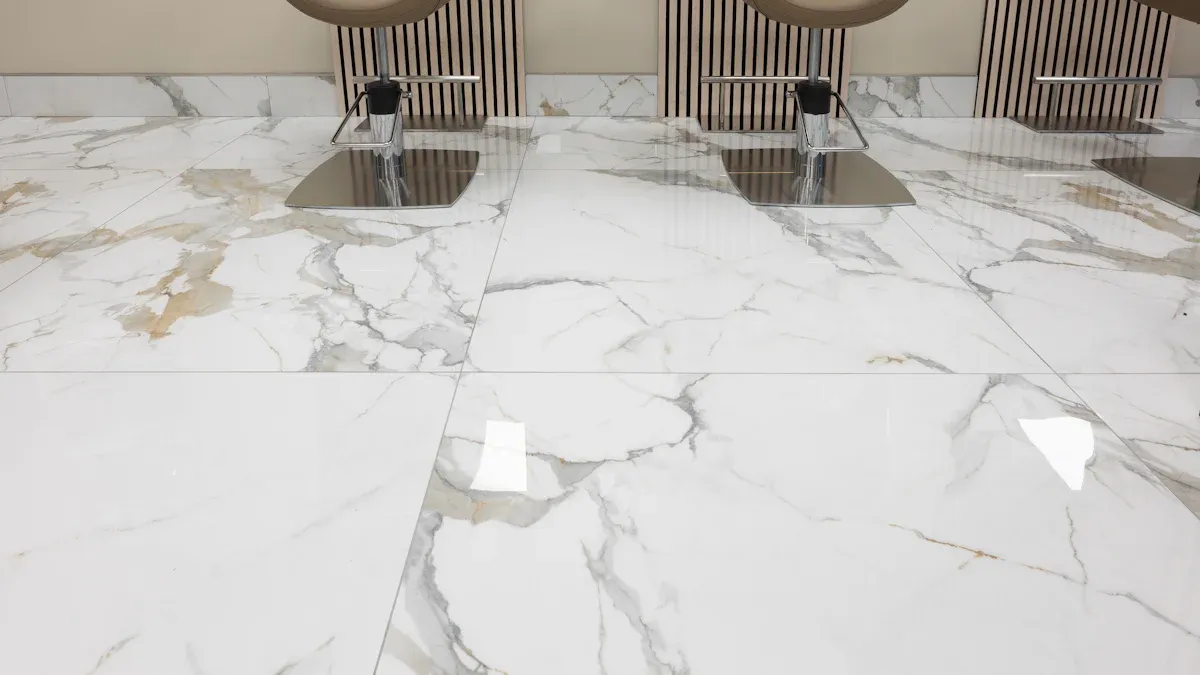
Best Options
When you want your tile floors to last, you need the right subfloor. In 2025, you have several great choices. Let’s look at the most popular options:
Key Advantages | Key Disadvantages | Recommended Use | |
|---|---|---|---|
MgO Board | Fire-resistant, water and mold resistant, durable, eco-friendly | Higher cost, less availability | Ideal for wet areas like bathrooms, basements, kitchens; top choice for moisture-prone areas |
Plywood | Strong, long-lasting, resists water when sealed, good heat retention | More expensive, heavy, requires sealing | Suitable for most rooms including humid areas; commonly used with tile flooring |
OSB | Cost-effective, large sheets reduce seams, environmentally friendly | Swells with water, not suitable for wet rooms | Best for dry rooms and budget-conscious projects |
Concrete | Very strong, low maintenance, compatible with tile and stone floors | Heavy, difficult to install | Commonly used for basements and ground floors |
You will see that magnesium oxide (MgO) board stands out for wet spaces. It resists water, mold, and fire, so it works well in bathrooms and kitchens. Plywood also makes a solid base for tile, especially if you seal it. Concrete is another strong choice, especially for basements. OSB is best if you want to save money, but it does not handle water well.
Tip: If you want the best subfloor for tile in a bathroom or kitchen, pick MgO board or cement board. Both give you a flat, stable surface and keep water from ruining your floor.
Underlayment Tips
You want your tile floor to stay smooth and crack-free. The right underlayment helps a lot. Here are some tips to get the best results:
Use cement backer board or MgO board for a strong, water-resistant base. These boards stop swelling and keep your tile from cracking.
Try an uncoupling membrane if your subfloor moves or has small cracks. This layer absorbs movement and keeps your tile safe.
In wet areas, always add a waterproof membrane. This stops water from getting under your tile and causing damage.
Self-leveling compounds help if your floor is uneven, but they do not protect against water.
Make sure your subfloor is clean and dry before you start. Overlap seams on membranes for extra protection.
🛠️ Pro Tip: For busy bathrooms or kitchens, use both an uncoupling membrane and a waterproof layer. This combo gives your tile floor the best chance to last for years.
Choosing the right subfloor and underlayment keeps your tile looking great and stops problems before they start. You will enjoy a floor that feels solid and stays beautiful, even in the busiest parts of your home.
Underlayment Guide
 When to Use Underlayment
When to Use Underlayment
You might ask if you need underlayment for your floor. The answer depends on your room and the flooring you pick. Underlayment is a hidden layer that helps your floor last longer. It protects your floor from damage and makes it feel better. Here are times when you should always use underlayment:
If you have a concrete slab, underlayment stops water from coming up. A moisture barrier like 6 mil polyethylene sheeting works best.
If your room is over a crawlspace or unfinished basement, use vapor-reducing underlayment. Red rosin paper or housewrap helps keep out humidity.
If you see mold, wet joists, or water drops, fix these first. Do not install underlayment or flooring until the problems are gone.
If your subfloor has bumps or dips, underlayment makes it smooth and flat.
If you want less noise, underlayment helps make rooms quieter. This is good for condos or upstairs spaces.
If you want more comfort and warmth, underlayment adds insulation. It also makes the floor feel softer.
If your subfloor is old or not perfect, underlayment gives you a firmer, quieter floor.
If the flooring company says you need it, follow their rules. Some laminate flooring and hardwood need underlayment to keep the warranty.
Tip: Thin floors like laminate flooring or vinyl need underlayment. It hides small flaws and helps stop wear.
Types of Underlayment
Picking the right underlayment changes how your floor feels and lasts. Each type has its own good points. Here is a quick guide to the most popular choices in 2025:
Underlayment Type | Key Benefits | Best For | Extra Info |
|---|---|---|---|
Felt | Makes floors quieter, lets wood breathe, smooths bumps | Plywood subfloors, hardwood | Needs moisture barrier on concrete |
Foam (with vapor barrier) | Blocks water, cushions, insulates | Concrete slabs, laminate flooring | Great for basements and wet rooms |
Cork | Soft, quiet, stops dents, fights mold | Plywood, some concrete, kitchens | Good for soft woods and busy places |
Rubber/Fiber | Firm, quiet, cushions, lasts long | Plywood, concrete, high-traffic | Helps stop squeaks and supports heavy use |
If you want to install laminate flooring, pick the right underlayment for laminate. Foam with a vapor barrier is best for basements or concrete. Cork is good for kitchens and busy rooms. Felt works well for hardwood over plywood. Rubber or fiber underlayment gives extra support and keeps things quiet.
🛠️ Pro Tip: Always read the flooring instructions. Some laminate flooring needs special underlayment for the best results.
Underlayment does more than just sit under your floor. It protects, cushions, and keeps your home quiet. If you want your laminate flooring to look and feel great, do not skip this step.
How to Choose a Subfloor
Choosing the right subfloor can make or break your new flooring. You want a solid, quiet, and long-lasting floor, so let’s break down what matters most.
Flooring Type
Start by matching your subfloor to your finished flooring. Each type needs something different for the best results. Check out this table to see what works best:
Finished Flooring Type | Recommended Subfloor Material(s) | Key Requirements |
|---|---|---|
Hardwood | Plywood, OSB, Engineered Wood | Needs a strong, stable base; engineered wood adds moisture resistance and sound insulation |
Tile | Concrete, Backer Board | Needs a level, moisture-resistant base to stop cracks and support heavy tiles |
Vinyl | Plywood, OSB, Engineered Wood | Needs a smooth, dry surface; engineered wood is great for luxury vinyl planks |
You’ll want to use a moisture barrier under hardwood and vinyl to keep water out. For tile, always add a backer board and a barrier to stop water from seeping through. If you skip these steps, your flooring could warp, crack, or get moldy.
Tip: Always check your subfloor thickness. Hardwood and tile need thicker, sturdier bases than vinyl or carpet.
Climate and Moisture
Moisture is the biggest enemy of any subfloor. If you live in a humid area or have a basement, you must use a moisture barrier. Here’s what you should do:
Test your subfloor with a moisture meter before you install anything.
Keep subfloor moisture between 6% and 12% for plywood and OSB.
Make sure the difference between your hardwood and subfloor moisture is less than 4%.
Control your home’s humidity between 30% and 50%.
Always install a vapor barrier or moisture barrier in damp spaces, like basements or bathrooms.
If you ignore moisture, you risk warped floors, squeaks, and even mold. A good barrier keeps your flooring safe and dry.
🛑 Don’t forget: Lay down a vapor barrier or moisture barrier before you start. This simple step saves you money and headaches later.
Budget
Your budget shapes your choices, but you don’t have to sacrifice quality. Here’s a quick look at what you might spend:
Subfloor Material | Cost per sq. ft. (2025) |
|---|---|
Basic Vinyl | |
Standard Carpet | $3–$6 |
Plywood/OSB | $4–$10 |
Tile/Stone | $12–$20+ |
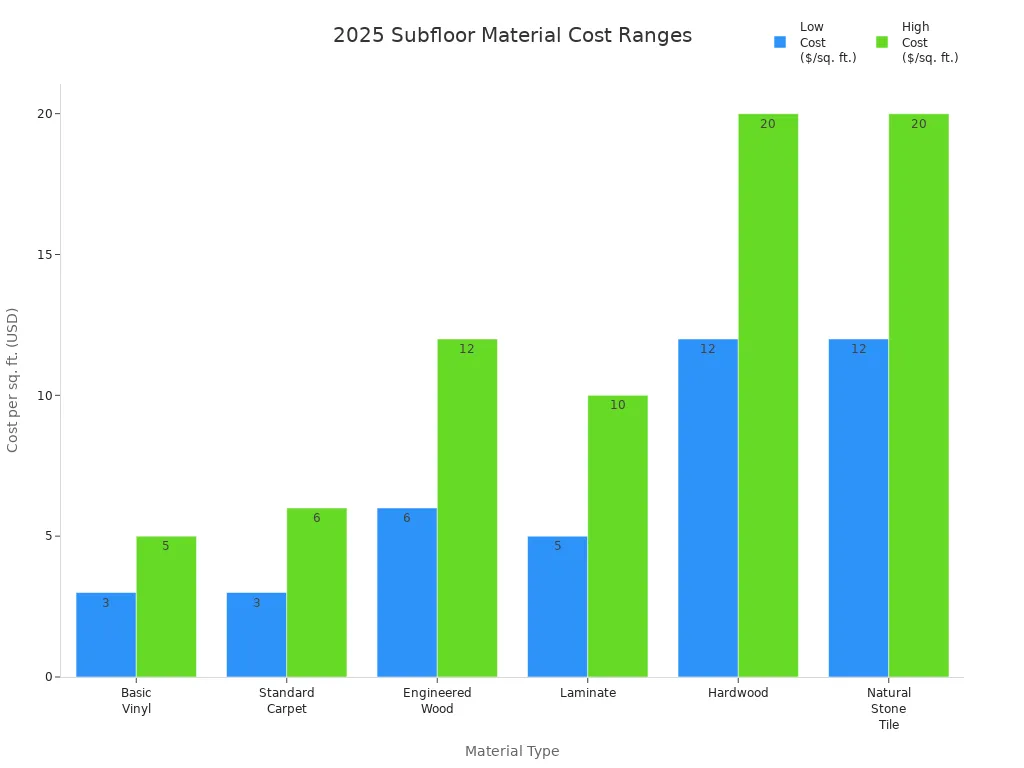
Remember, subfloor prep can add 10-15% to your total cost. Always plan for a moisture barrier and repairs if your subfloor isn’t perfect. Get a few quotes and ask about labor, barriers, and extra services. This way, you avoid surprises and get the best value for your flooring project.
Pro Tip: Never skip subfloor planning. Check for dry, level, and stable surfaces before you install any flooring. This step prevents sinking, noise, and costly repairs.
You want the best subfloor for your project, so here’s a quick recap. For hardwood, plywood gives you a strong, stable base. Tile works best with cement board or magnesium oxide board, which both handle moisture well. If you plan to install vinyl or vinyl flooring, magnesium oxide board stands out for durability and moisture resistance. OSB is the most cost-effective choice for dry areas, but it’s not ideal for vinyl or vinyl flooring in wet spaces. Always check that your subfloor is flat, clean, and dry before laying vinyl or vinyl flooring. If you need help, use guides or get quotes from local pros. With the right subfloor, your vinyl flooring will look great and last for years!
FAQ
What is the best subfloor for a bathroom?
You want a subfloor that handles water. Cement board or magnesium oxide board work best. Both resist moisture and mold. You get a strong, safe base for tile or vinyl in wet spaces.
Can I install hardwood over concrete?
Yes, you can. Use engineered hardwood for best results. Always add a moisture barrier first. This keeps your floor dry and stops warping.
How do I know if my subfloor needs replacing?
Look for soft spots, squeaks, or sagging. If you see mold or water damage, it’s time to replace it. A solid subfloor feels firm and flat when you walk on it.
Do I need underlayment with vinyl flooring?
Yes! Underlayment smooths out bumps and adds comfort. It also helps block moisture. Always check your vinyl flooring instructions for the right type.
Is OSB good for all rooms?
OSB works well in dry rooms like bedrooms or living rooms. Avoid using it in bathrooms or basements. It swells and warps if it gets wet.

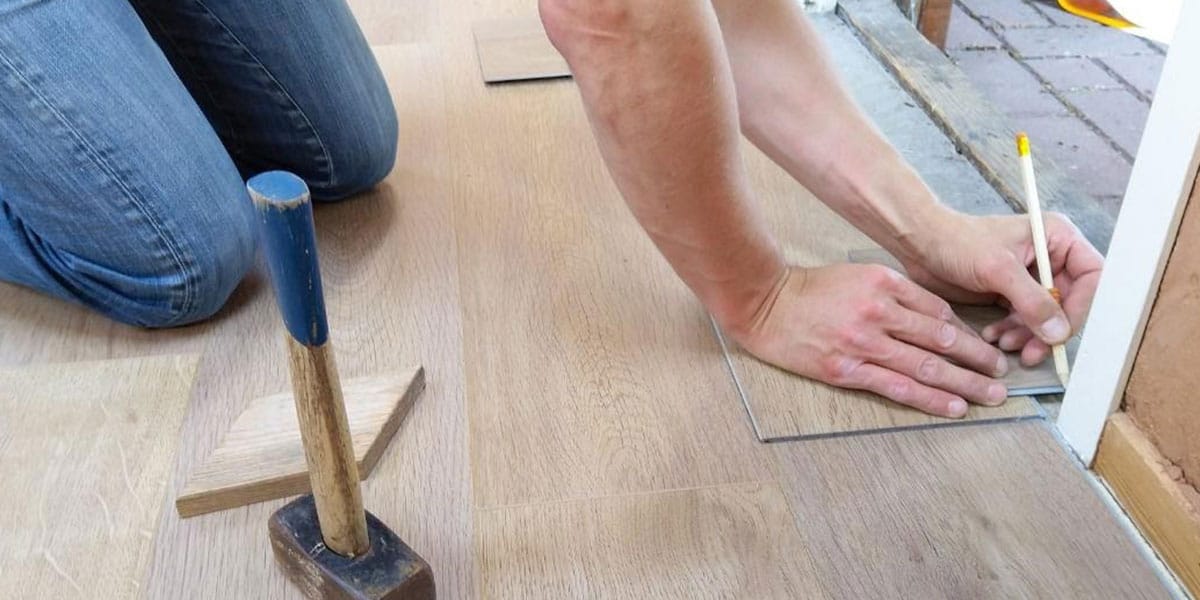 When to Use Underlayment
When to Use Underlayment